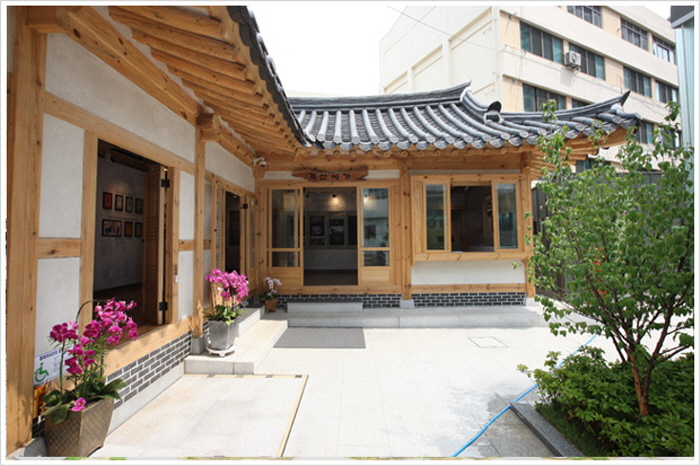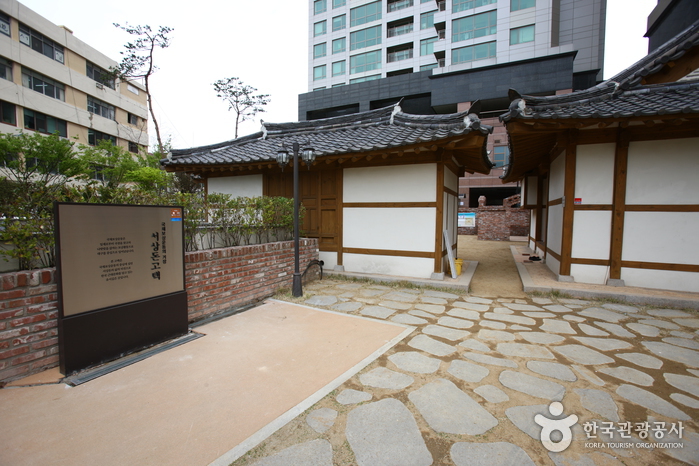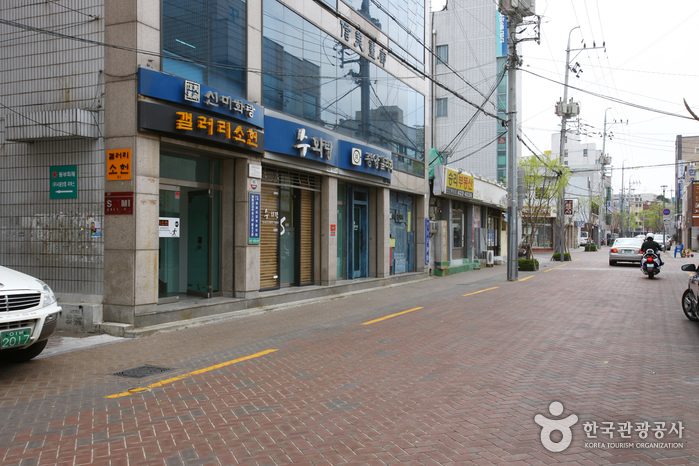Eldis Regent Hotel (엘디스 리젠트 호텔)
3.4 Km 11164 2021-02-11
2033, Dalgubeol-daero, Jung-gu, Daegu
+82-53-253-7711
Situated in the heart of the city of Daegu, Eldis Regent Hotel is in close proximity to domestic financial institutions, government offices, Daegu World Cup Stadium, and Daegu Stadium. The European-style business hotel has up-to-date central heating, ventilation, and air conditioning systems and each of the eight different types of guestrooms are equipped with soundproof windows. Hotel facilities include a jazz bar (“Blue Chicago”), and a fitness club outfitted with modern weight and workout equipment.
The hotel is located near a transfer subway station, making it easy to reach many shopping districts of Daegu. Lotte Department Store, Hyundai Department Store, and Daegu Department Store, as well as traditional Seomun Market are all within walking distance of the hotel, making Eldis Regent Hotel a favorite accommodation among shoppers. Various medical clinics are located nearby with Yangnyeongsi, a tourist site known for its 350 years of history in traditional Korean medicine, a mere 3-minute walk from the hotel.
Seomun Market & Seomun Night Market (대구 서문시장 & 서문시장 야시장)
3.5 Km 66084 2023-11-17
45 Keunjang-ro 26-gil, Jung-gu, Daegu
+82-53-256-6341
Seomun Market opened in its current location in the 1920s after reclaiming the Cheonhwangdangji Reservoir, but it has a much longer history. In the Joseon dynasty, Seomun Market was one of three major markets in the nation. It was called Seomun Market because it was located on the west side of the Daegu Fortress. Despite relocating, the alleyways of the original market still feature names of the items available there, such as Hongdukkae Pancake and Chicken Pancake Alley. Textile-related goods are the main products available now, but they also offer a little bit of everything else, including silk goods, dry goods, undershirts, crafts, dishes, clothes, and dried seafood.
Tonymoly - Daegu Banwoldang Branch [Tax Refund Shop] (토니모리 대구반월당)
3.5 Km 0 2024-04-22
B2100 Dalgubeol-daero, Jung-gu, Daegu
-
Aritaum - Daegu Banwoldang Jungang Branch [Tax Refund Shop] (아리따움 대구반월당중앙)
3.5 Km 0 2024-04-16
B2100 Dalgubeol-daero, Jung-gu, Daegu
-
Olive Young - Daegu Banwoldang Branch [Tax Refund Shop] (올리브영 대구반월당)
3.5 Km 0 2024-04-16
B2100 Dalgubeol-daero, Jung-gu, Daegu
-
Modern History Experience Hall Gyesanyega (근대문화체험관 계산예가)
3.5 Km 2693 2021-04-27
6-1, Seoseong-ro, Jung-gu, Daegu
+82-53-661-3323
Modern History Experience Hall Gyesanyega opened in 2012 is a public space designed for rest and education. Visitors can enjoy a moment of relaxation while touring Daegu Modern Culture Alley, as well as learn more about the history of the area through the video hall and about the houses featured along the way, such as House of Yi Sang-hwa and House of Seo Sang-don, at the hanok exhibition hall.
House of Seo Sang-don (서상돈 고택)
3.5 Km 8539 2021-07-01
6-1, Seoseong-ro, Jung-gu, Daegu
+82-53-256-3762
The house of entrepreneur and activist Seo Sang-don is located in the heart of Daegu. In 1907, in an effort to repay national debt and to gain independence from Japan, Seo launched the National Debt Repayment Movement as well as a nationwide campaign calling for people to quit smoking.
In celebration of Seo's leadership, the City of Daegu restored Seo's old house and opened it to the public. The City also built the National Debt Repayment Park and erected a statue of Seo in his honor.
House of Yi Sang-hwa (이상화 고택)
3.6 Km 10942 2023-01-06
6-1, Seoseong-ro, Jung-gu, Daegu
+82-53-256-3762
Yi Sang-hwa was a nationalist poet, who resisted the Japanese colonialism. This was his house from 1939 until his death in 1943. His house was neglected after he died, until a citizens' movement in 1999 to preserve the house urged the Military Mutual Aid Association to purchase it, and donate it to the City of Daegu on October 27, 2005. It has been restored and opened to the public, serving as the center for education of the poet's brave spirit and work.
March 1st Independence Movement Road (3·1만세운동길)
3.6 Km 0 2023-01-20
Dongsan-dong, Jung-gu, Daegu
March 1st Independence Movement Road is a historical location where Daegu citizens gathered for the independence movement on March 8, 1919, and the midpoint of Daegu Modern Alley Tour Course 2. Passing Cheongna Hill Missionary's House and Jeil Church, you will come to a road with murals of the independence movement. The March 1st Independence Movement Road is a hilly road leading to Gyesan Cathedral. It is also called 90 Stairs because there are 90 steps. On the wall of the stairs, there is an augmented reality (AR) experience zone along with site photos from history. By scanning the QR code is a 3D video that vividly reproduces the independence movement, enabling a realistic experience of history. Follow the signs of the Daegu March 8th Independence Movement marching road to reach the main road and it will lead to the the 100th anniversary monument of the March 1st Movement and the starting point of the March 8 Movement. A guided alley tour is available for free with an online reservation on the official website.
Bongsan Culture Street (봉산문화거리)
3.6 Km 15700 2020-03-24
38, Bongsanmunhwa-gil, Jung-gu, Daegu
+82-53-425-6845
Bongsan Culture Street is a landmark culture & arts place in Daegu. The street, which stretches all the way from Daegu Hakwon to Bongsan Yukgeori (six-way intersection), has over 20 galleries of various sizes.
It was 1991 when the small alley with several art galleries started to turn into a breeding ground for culture and the arts. Soon after, the street was officially designated ‘Bongsan Culture Street’ and subsequently, the roads were neatly paved, artistic street lamps were installed, and streetside gardens were created. With the opening of Bongsan Culture Center and Cultural House for Teens, the street became increasingly frequently by citizens, not just professional artists.
At Bongsan Culture Street, artwork os on display throughout the year and every October (when the Bongsan Art Festival is held) the whole street is filled with artistic passion.

![Tonymoly - Daegu Banwoldang Branch [Tax Refund Shop] (토니모리 대구반월당)](http://tong.visitkorea.or.kr/cms/resource/28/2884128_image2_1.jpg)



 English
English
 한국어
한국어 日本語
日本語 中文(简体)
中文(简体) Deutsch
Deutsch Français
Français Español
Español Русский
Русский